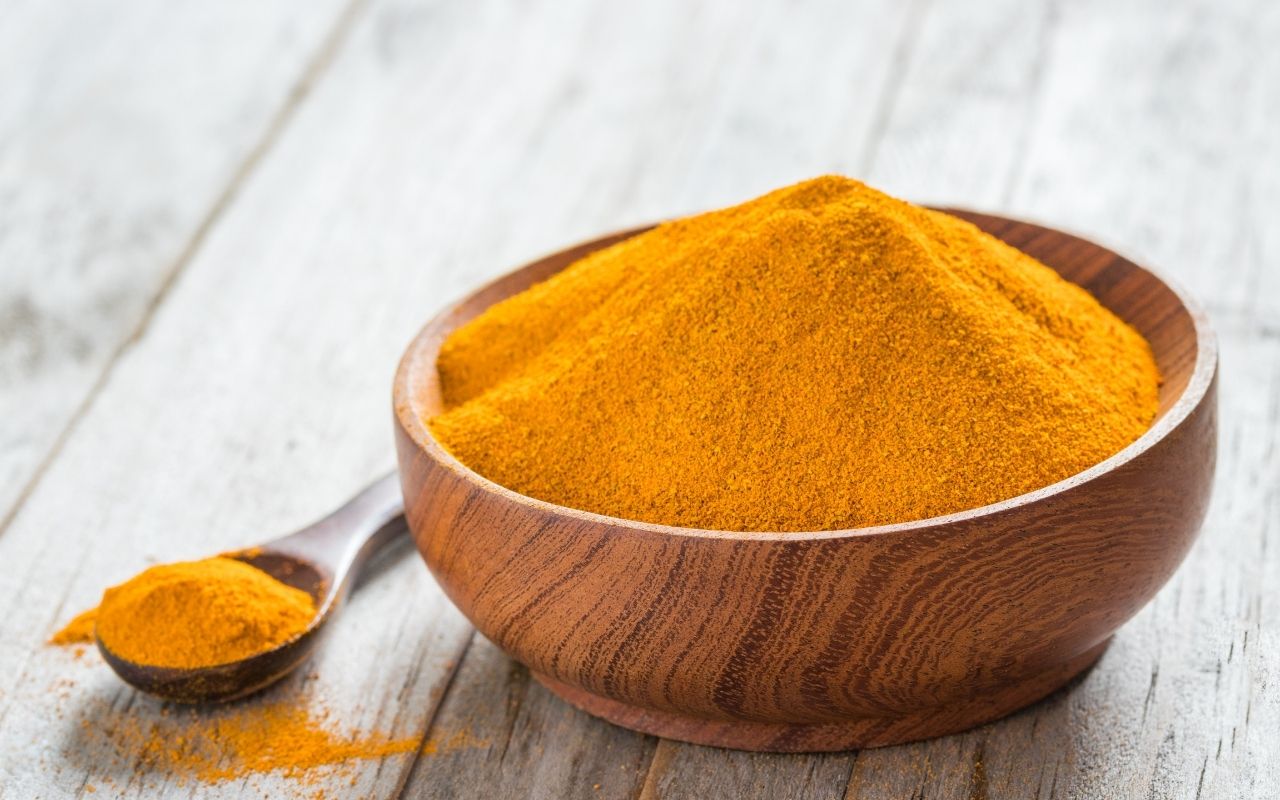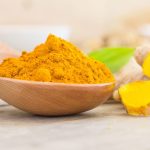Turmeric, a golden-yellow spice derived from the rhizome of the Curcuma longa plant, has been celebrated in culinary traditions and medicinal practices for centuries. Originating from Southeast Asia, this vibrant spice is a staple in Indian cuisine, imparting color and flavor to dishes. However, beyond its culinary uses, turmeric has garnered global attention for its potential health benefits, attributed mainly to its active ingredient, curcumin.
The Historical and Cultural Significance of Turmeric
Turmeric's rich history spans thousands of years. In ancient India, it was a culinary ingredient and a significant element in religious ceremonies and traditional medicine. Ayurvedic and Chinese medicine have long used turmeric to treat various ailments, including pain, inflammation, and digestive issues.
In addition to its medicinal uses, turmeric is also used in cultural traditions. For example, during the Bhandara Festival in Jejuri, India, turmeric is celebrated for its vibrant color and symbolic significance, sparking festivities filled with gold-hued splendor.
The Science Behind Turmeric's Health Benefits
Curcumin, the primary bioactive compound in turmeric, is responsible for most of its health benefits. This polyphenol has been extensively studied for its anti-inflammatory, antioxidant, and anticancer properties. However, curcumin's most renowned benefit is its potent anti-inflammatory effect.
Inflammation is a common underlying factor in many chronic diseases, including heart disease, cancer, metabolic syndrome, Alzheimer's disease, and various degenerative conditions. By inhibiting specific molecules involved in inflammation, curcumin can significantly reduce the risk of these diseases. Some studies suggest curcumin's anti-inflammatory effects may be on par with some pharmaceutical drugs without adverse side effects.
Curcumin's Mechanism of Action
Curcumin achieves its anti-inflammatory effects by inhibiting the activity of nuclear factor-kappa B (NF-κB), a protein complex crucial in regulating the immune response to infection. By blocking NF-κB, curcumin can reduce inflammation and potentially slow the progression of chronic diseases.
Furthermore, curcumin is a powerful antioxidant that neutralizes free radicals and stimulates the body's antioxidant enzymes. This dual action makes it an effective tool in combating oxidative stress, a critical factor in aging and many degenerative diseases.
Turmeric in Modern Medicine
Modern science has validated many of the traditional uses of turmeric. Numerous studies have explored its therapeutic potential, particularly in inflammatory conditions like osteoarthritis and rheumatoid arthritis. For instance, a study published in the Journal of Medicinal Food found that curcumin can improve symptoms and diagnostic indicators in patients with rheumatoid arthritis (Amalraj et al., 2017).
Similarly, a meta-analysis of randomized clinical trials concluded that turmeric extracts and curcumin could alleviate symptoms of joint arthritis, suggesting that this natural remedy could be a valuable adjunct therapy for arthritis sufferers (Daily et al., 2016).
Dosage and Safety Considerations
While turmeric is generally considered safe, it is crucial to adhere to recommended dosages to avoid potential side effects. Human clinical trials have demonstrated that 1 to 1.5 grams of curcumin daily are typically safe and effective. However, consuming higher doses, up to 8 grams daily, may also be safe under medical supervision (WebMD).
It is essential to be aware of potential interactions with medications. For instance, curcumin can enhance the effects of anticoagulants and antiplatelet drugs, increasing the risk of bleeding. Additionally, individuals with gallbladder issues, diabetes, or certain hormone-sensitive conditions should use turmeric cautiously.
Potential Side Effects
Despite its many benefits, excessive consumption of turmeric can lead to adverse effects. Common symptoms include stomach upsets, diarrhea, nausea, and allergic reactions. Long-term use of high doses may pose risks such as liver damage or interference with certain medications (Cortiba Health).
Turmeric's Culinary Uses
Beyond its medicinal properties, turmeric's culinary applications are vast and varied. It is a critical ingredient in many traditional dishes, particularly in Indian cuisine, where it is used in curries, rice dishes, and beverages. Turmeric lends a warm, slightly bitter flavor and a bright yellow color to foods, making it a favorite among chefs and home cooks.
Turmeric is used in savory dishes and beverages such as golden milk, a popular drink made from milk, turmeric, black pepper, and other spices. This comforting drink is delicious and provides a convenient way to incorporate turmeric into your diet.
Innovations in Turmeric Supplementation
The rising popularity of turmeric supplements has led to innovations aimed at improving the bioavailability of curcumin. Curcumin, in its natural form, is poorly absorbed in the bloodstream. To address this, supplement manufacturers have developed various formulations to enhance its absorption.
One such innovation is piperine, a compound found in black pepper, which can increase curcumin absorption by up to 2,000%. Additionally, some supplements use liposomal encapsulation or curcumin nanoparticles to enhance bioavailability (USA Today).
Turmeric and Skin Health
Turmeric's benefits extend beyond internal health; it is also a popular ingredient in skincare. Its anti-inflammatory and antioxidant properties effectively treat skin conditions such as acne, eczema, and psoriasis. Turmeric can help reduce redness, soothe irritation, and promote a healthy complexion.
DIY turmeric face masks are a popular way to harness these benefits at home. Combining turmeric with ingredients like honey, yogurt, and aloe vera can create a nourishing mask that brightens and rejuvenates the skin. However, it is essential to note that turmeric can temporarily stain the skin, so it should be used cautiously.
Turmeric's Role in Digestive Health
Turmeric has been traditionally used to support digestive health. It can stimulate bile production, which aids in the digestion of fats. Its anti-inflammatory properties can also help soothe digestive tract issues such as irritable bowel syndrome (IBS) and inflammatory bowel disease (IBD).
Research has shown that turmeric can reduce bloating, gas, and indigestion symptoms. Furthermore, its potential to reduce inflammation in the gut makes it a promising natural therapy for conditions like Crohn's disease and ulcerative colitis. However, more studies are needed to understand turmeric's impact on digestive healthfully.
Turmeric and Mental Health
Emerging research suggests that turmeric may also benefit mental health. Curcumin has neuroprotective properties that could help in the prevention and treatment of neurodegenerative diseases like Alzheimer's. It is believed to reduce inflammation and oxidative stress in the brain, factors that contribute to cognitive decline.
Moreover, curcumin's ability to boost brain-derived neurotrophic factor (BDNF) levels could improve mood and cognitive function. Low levels of BDNF have been linked to depression and other mental health disorders. By increasing BDNF levels, curcumin may help alleviate depressive symptoms and enhance overall brain health (Medical News Today).
Turmeric in Veterinary Medicine
Turmeric's benefits are not limited to humans; it is also used in veterinary medicine. Pets, particularly dogs, can benefit from turmeric's anti-inflammatory and antioxidant properties. It is often used to manage arthritis and other inflammatory conditions in animals.
Pet owners can incorporate turmeric into their pets' diets by mixing it with their food. However, it is essential to consult a veterinarian before adding any supplement to your pet's regimen, as dosages and potential interactions must be carefully considered.
Environmental Impact and Sustainability
As the demand for turmeric grows, its environmental impact must be considered. Turmeric is primarily grown in India, which accounts for about 80% of global production. Cultivating turmeric can affect local ecosystems, water supplies, and soil health.
Sustainable farming practices, such as organic farming and natural fertilizers, can help mitigate these impacts. Consumers can support sustainability by choosing turmeric products that are certified organic and sourced from environmentally responsible farms.
Conclusion
Turmeric, with its vibrant color and myriad of health benefits, continues to captivate culinary enthusiasts and health-conscious individuals worldwide. From its historical significance in traditional medicine to its modern applications in supplements and skincare, turmeric offers a wealth of advantages backed by scientific research.
However, it is crucial to use turmeric responsibly, adhering to recommended dosages to avoid potential side effects. As ongoing research sheds more light on its benefits and safety, turmeric remains valuable to a healthy lifestyle.
For those interested in integrating turmeric into their daily routine, it is advisable to consult with healthcare professionals to determine the most suitable forms and dosages for their individual needs. This way, they can enjoy the many benefits of this golden spice while minimizing any potential risks.
In summary, turmeric is more than just a spice; it is a powerful natural remedy with the potential to enhance your health and well-being in numerous ways. Whether you choose to use it in cooking, as a supplement, or skincare, turmeric's rich history and scientifically proven benefits make it a worthy addition to any health regimen.









